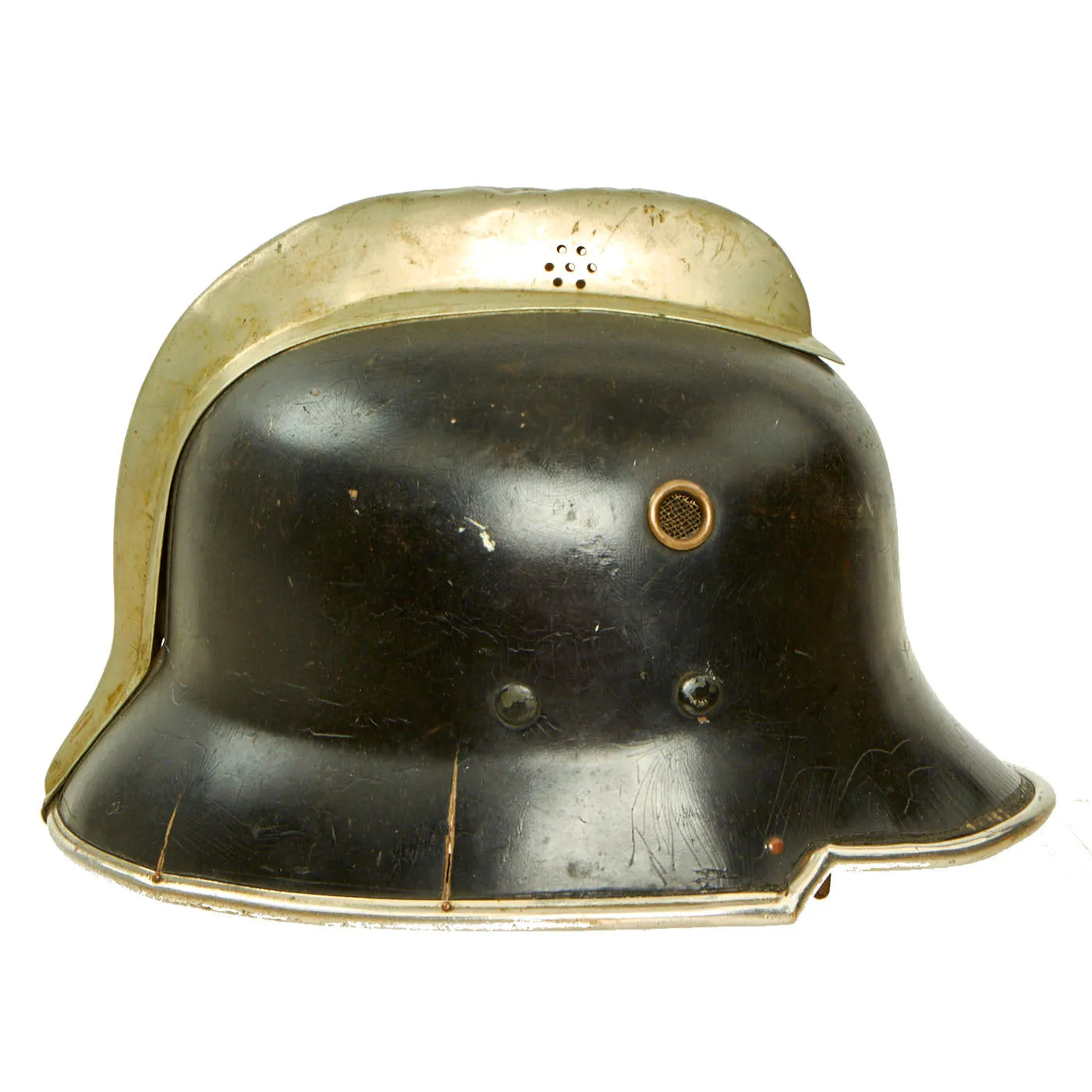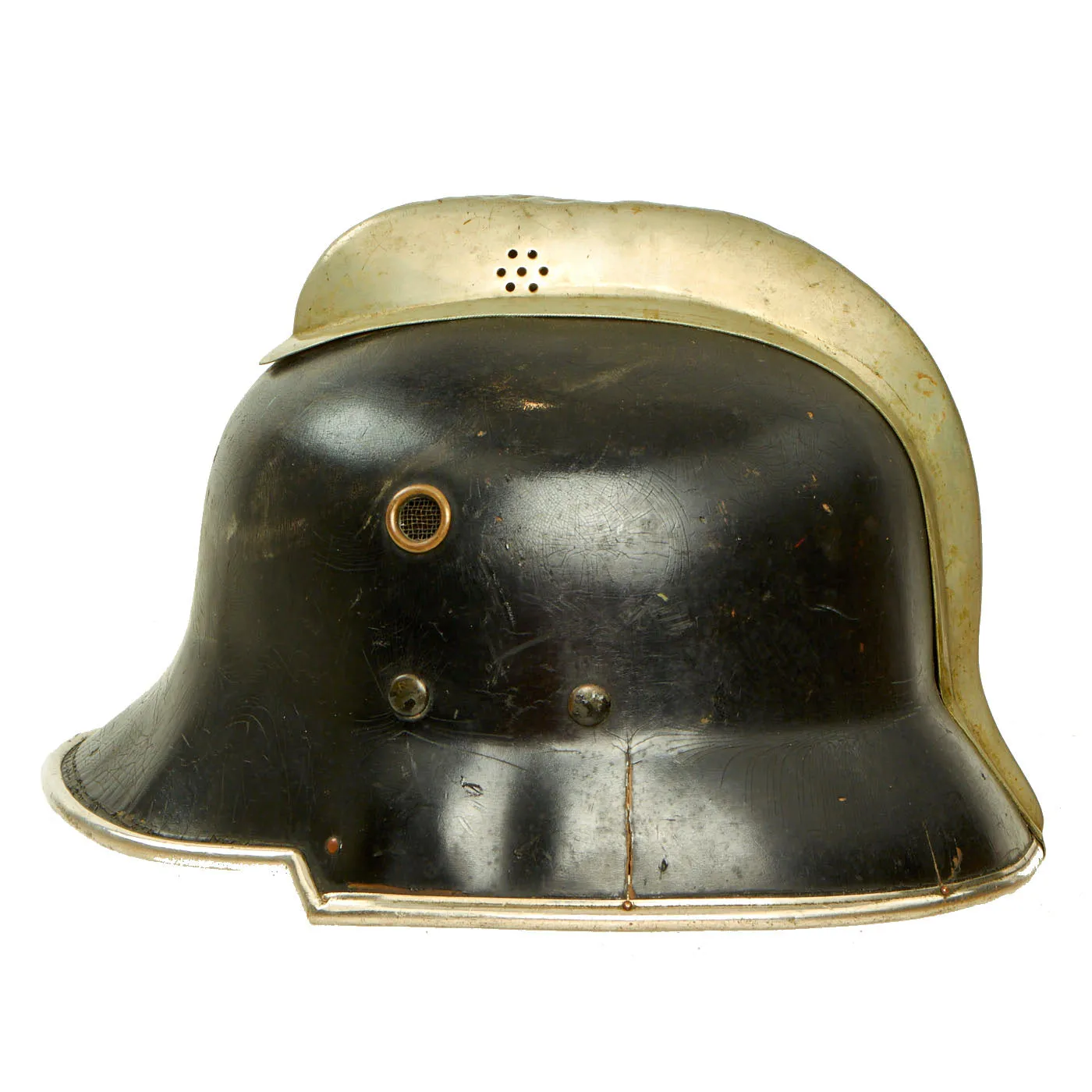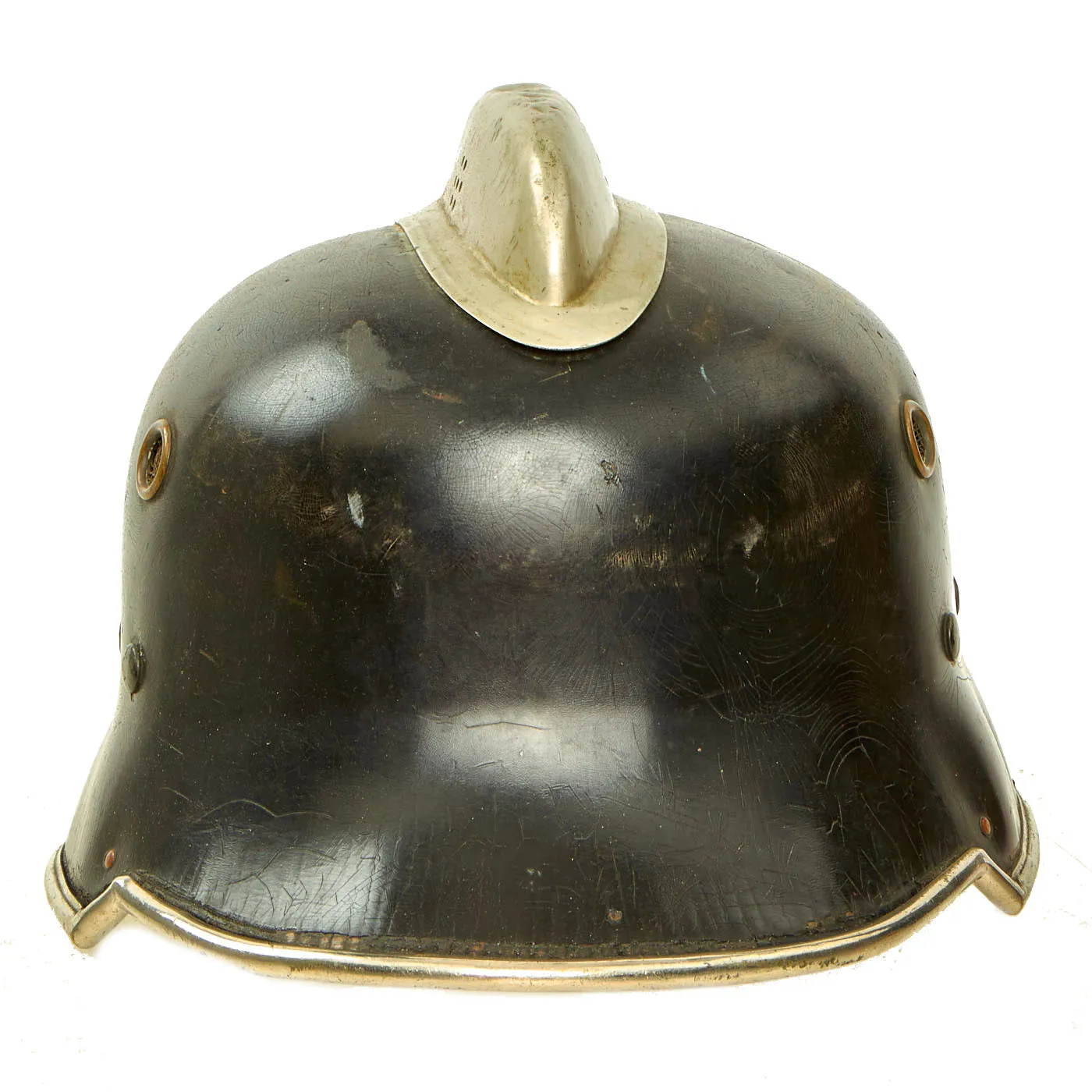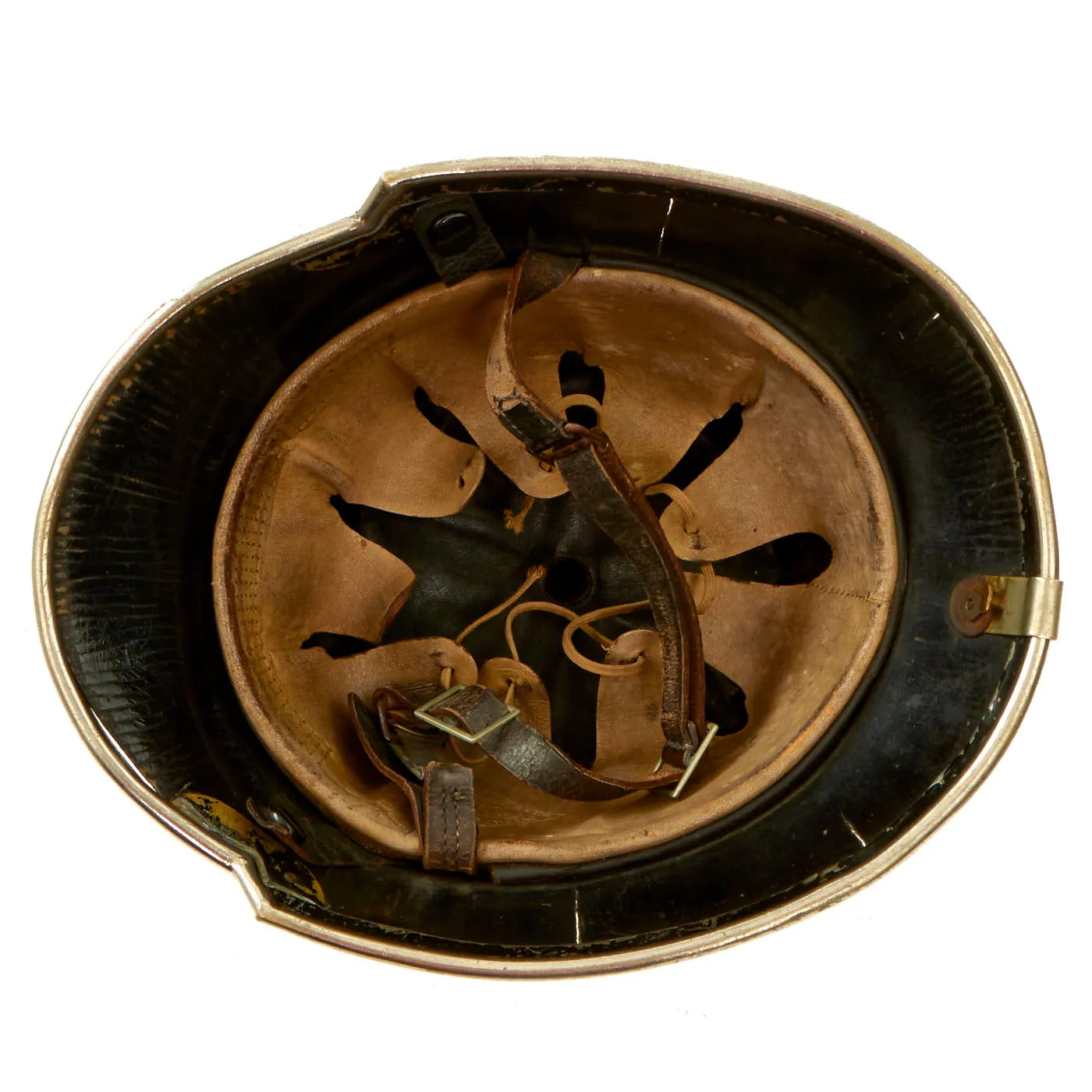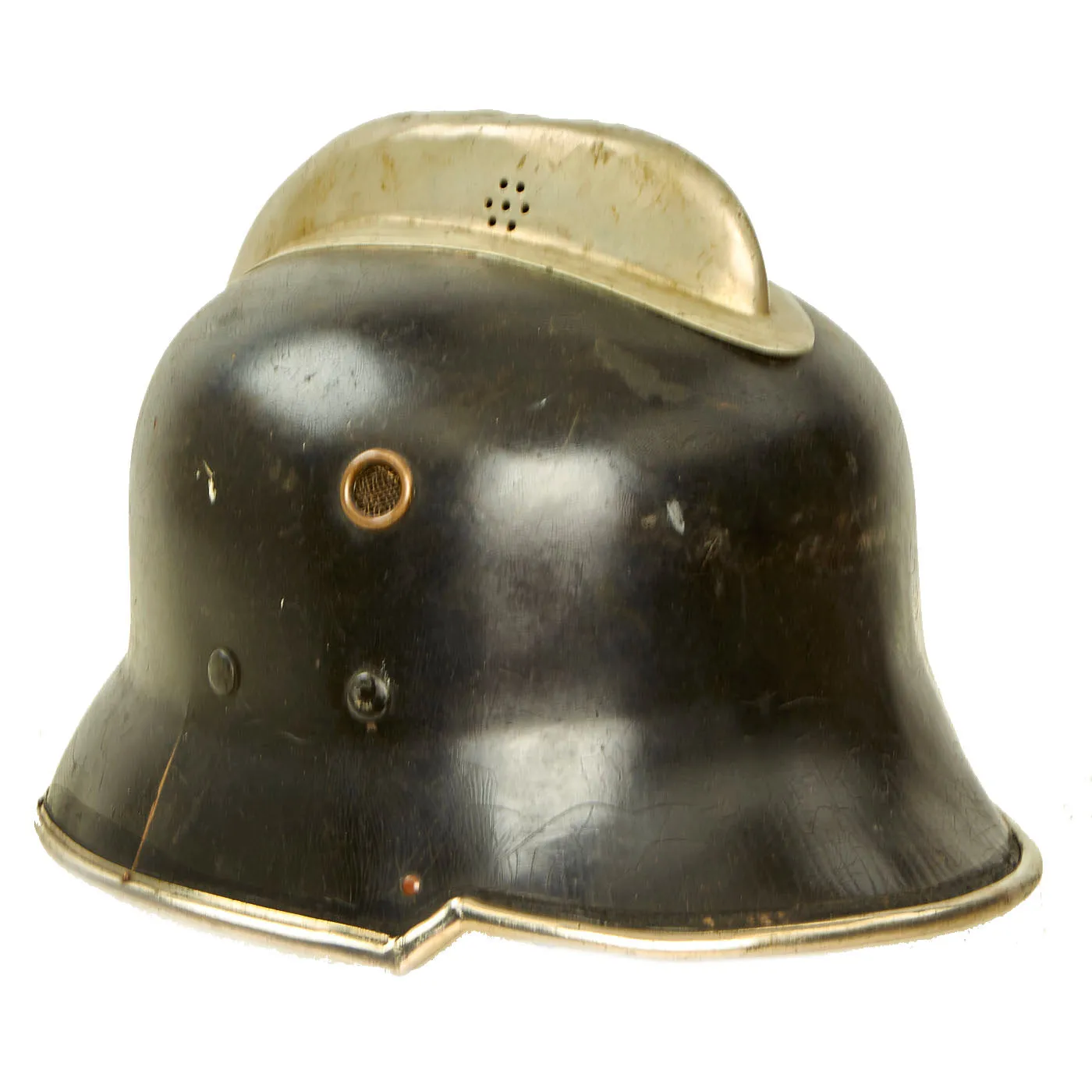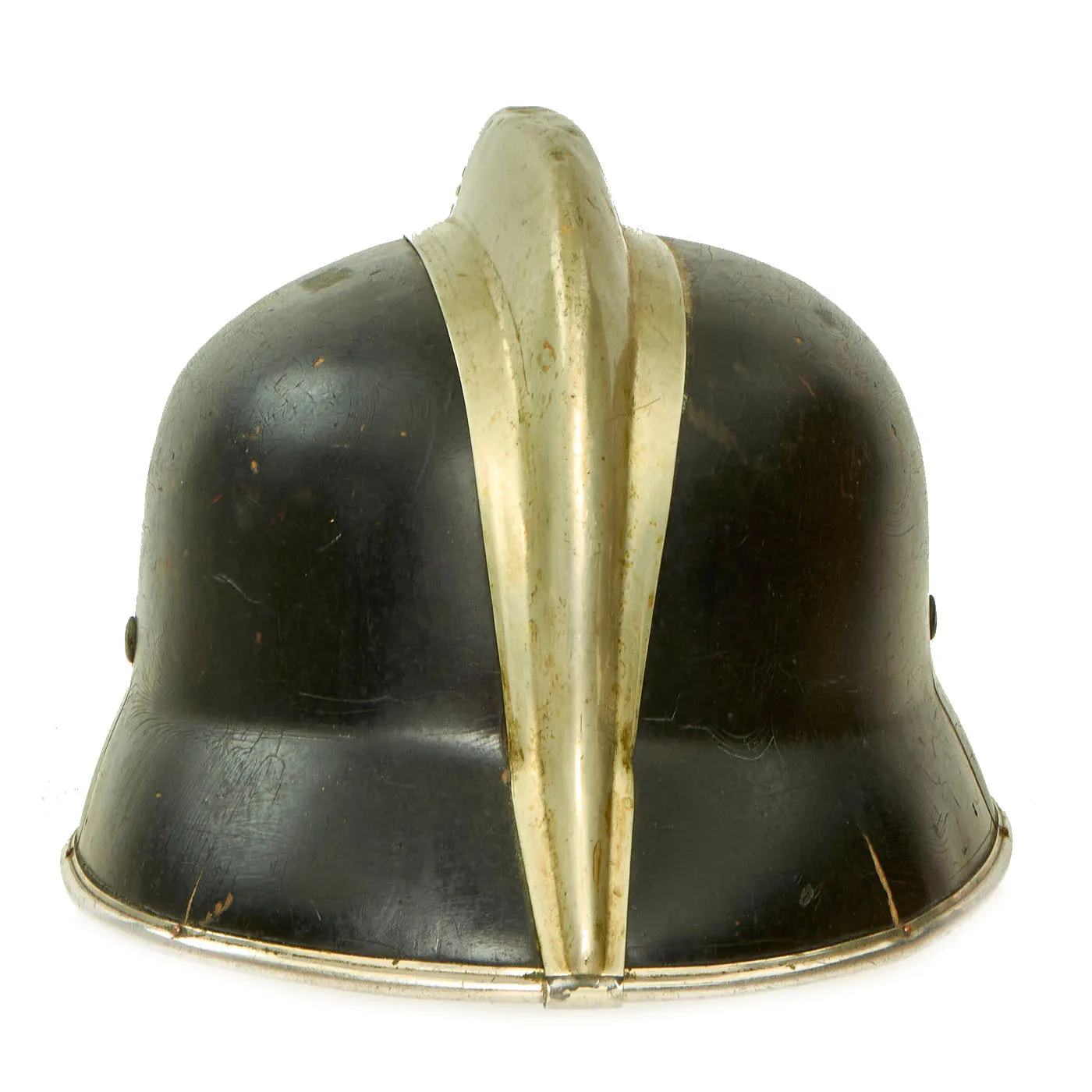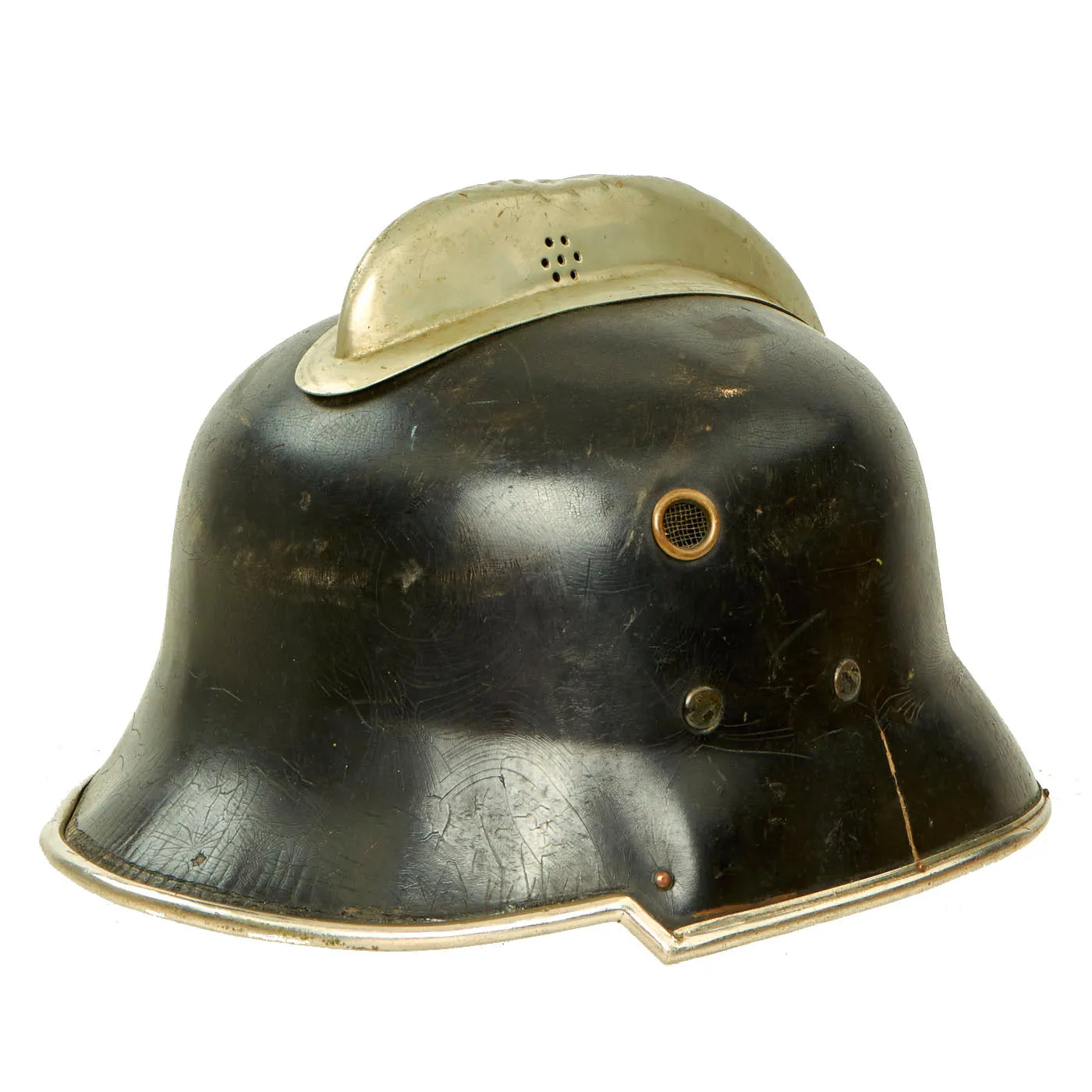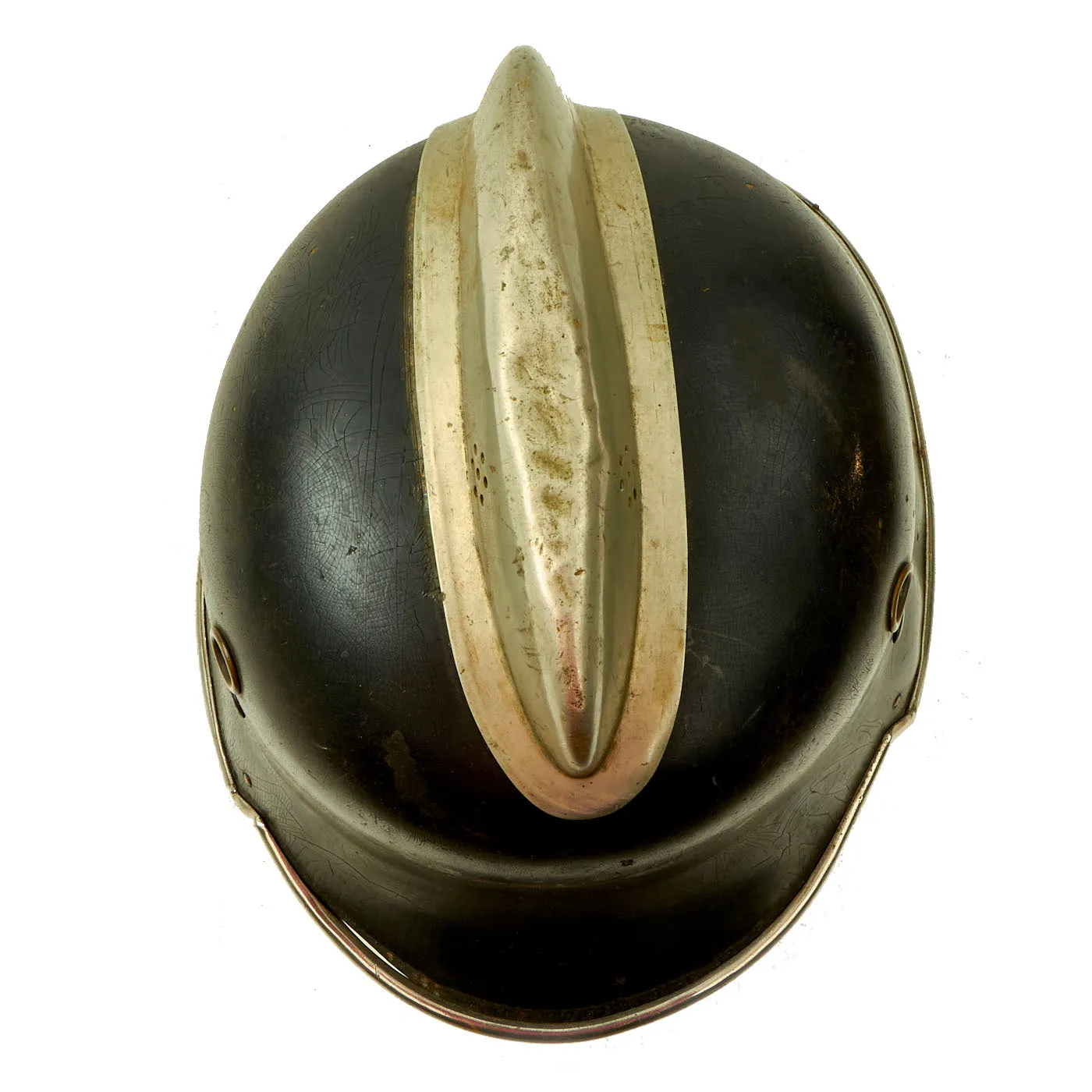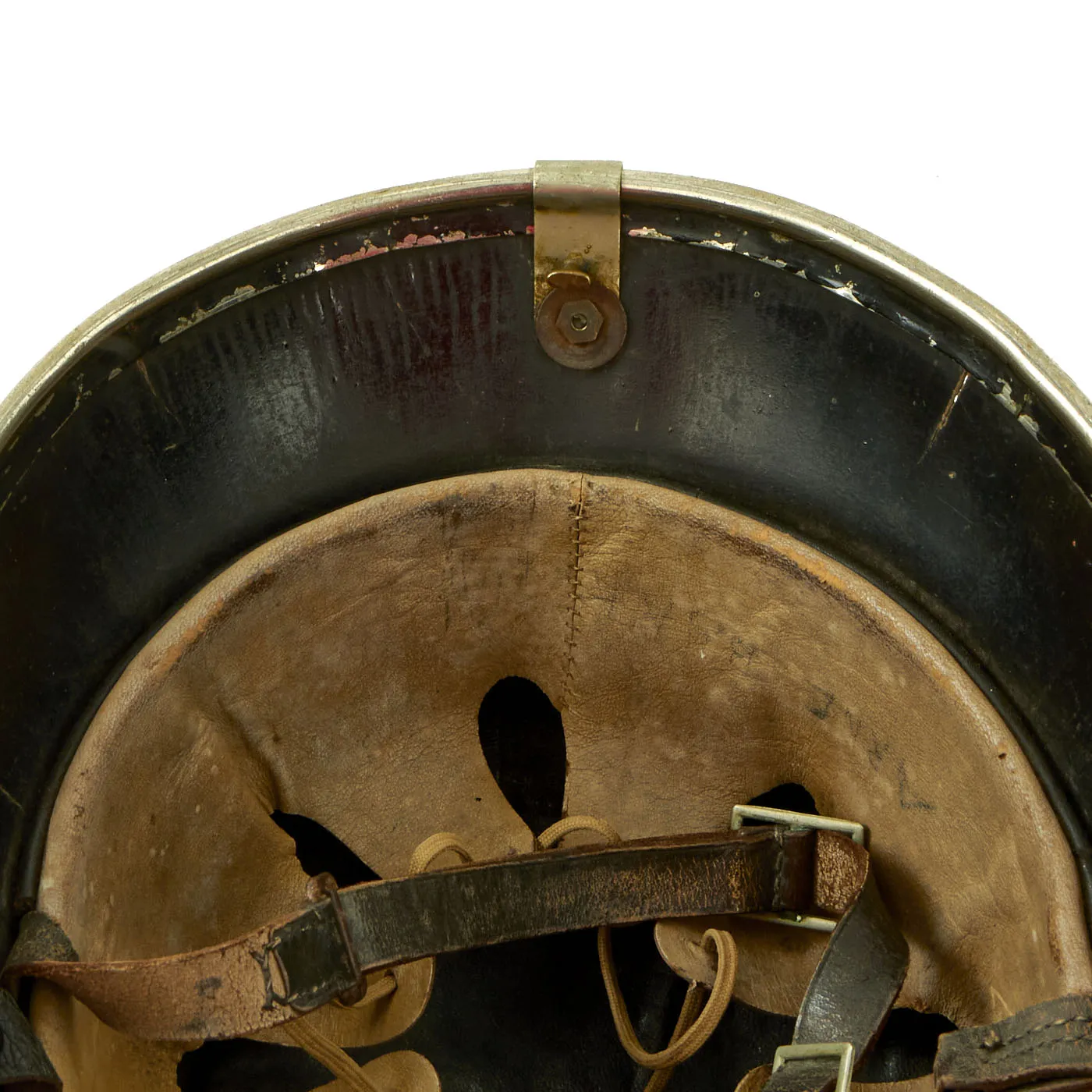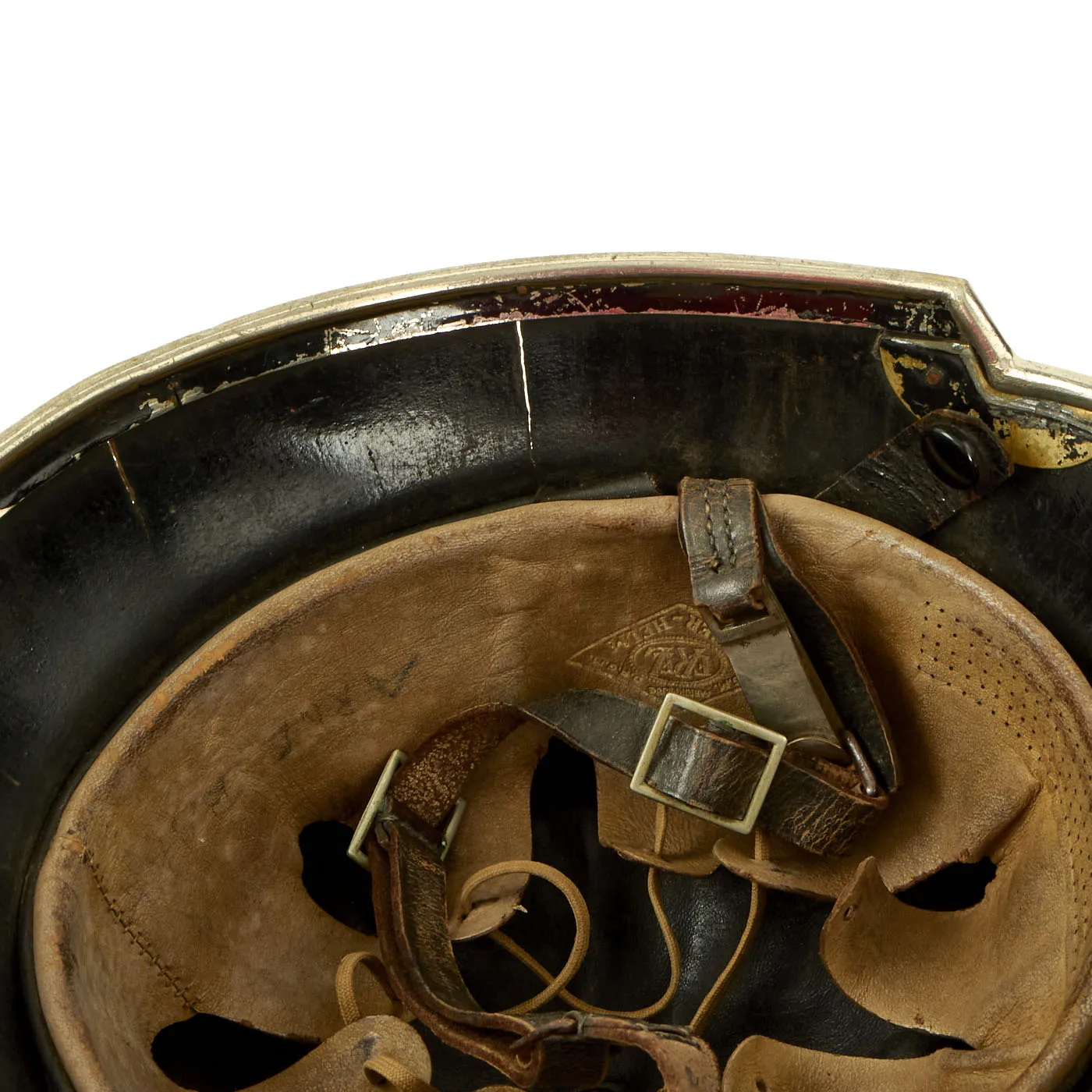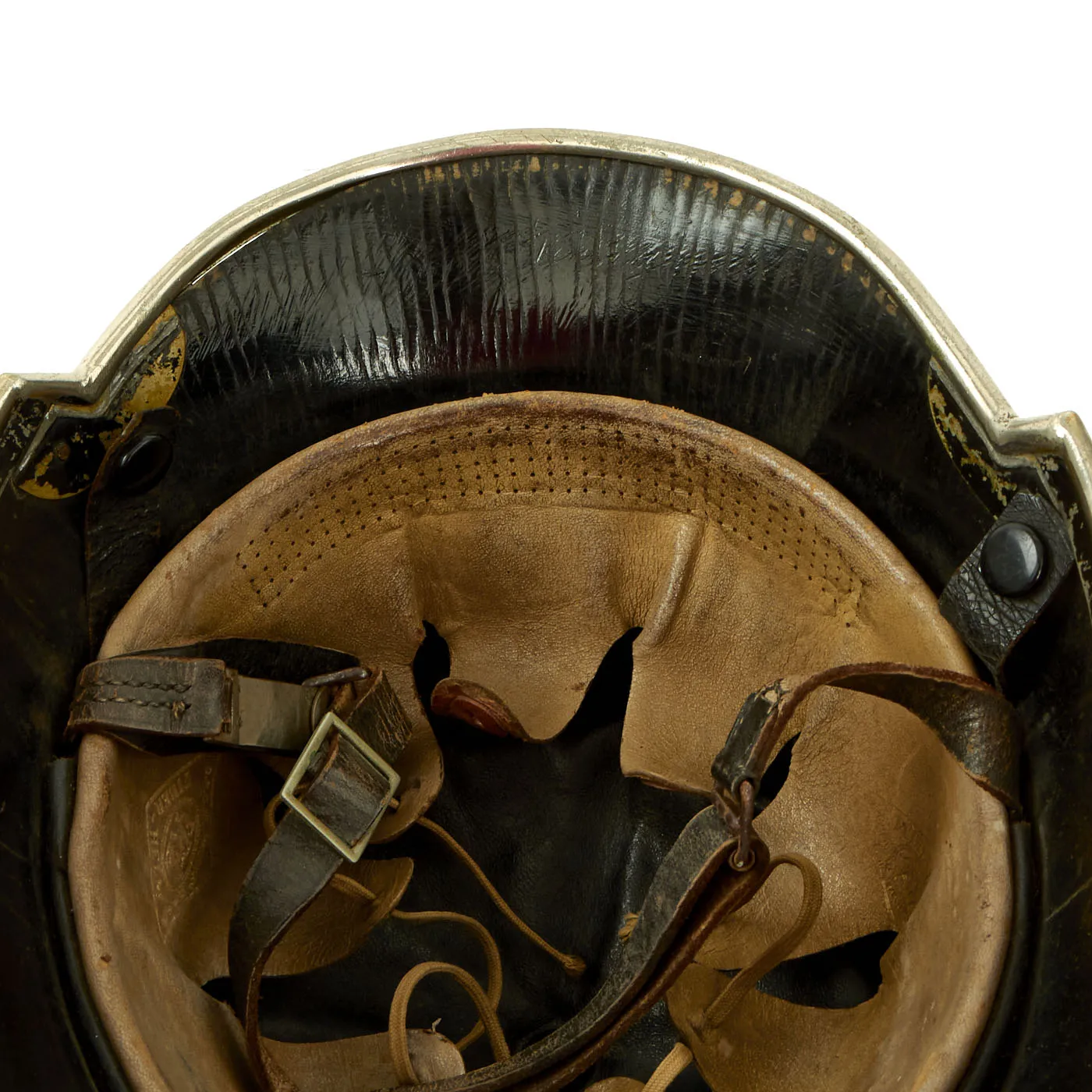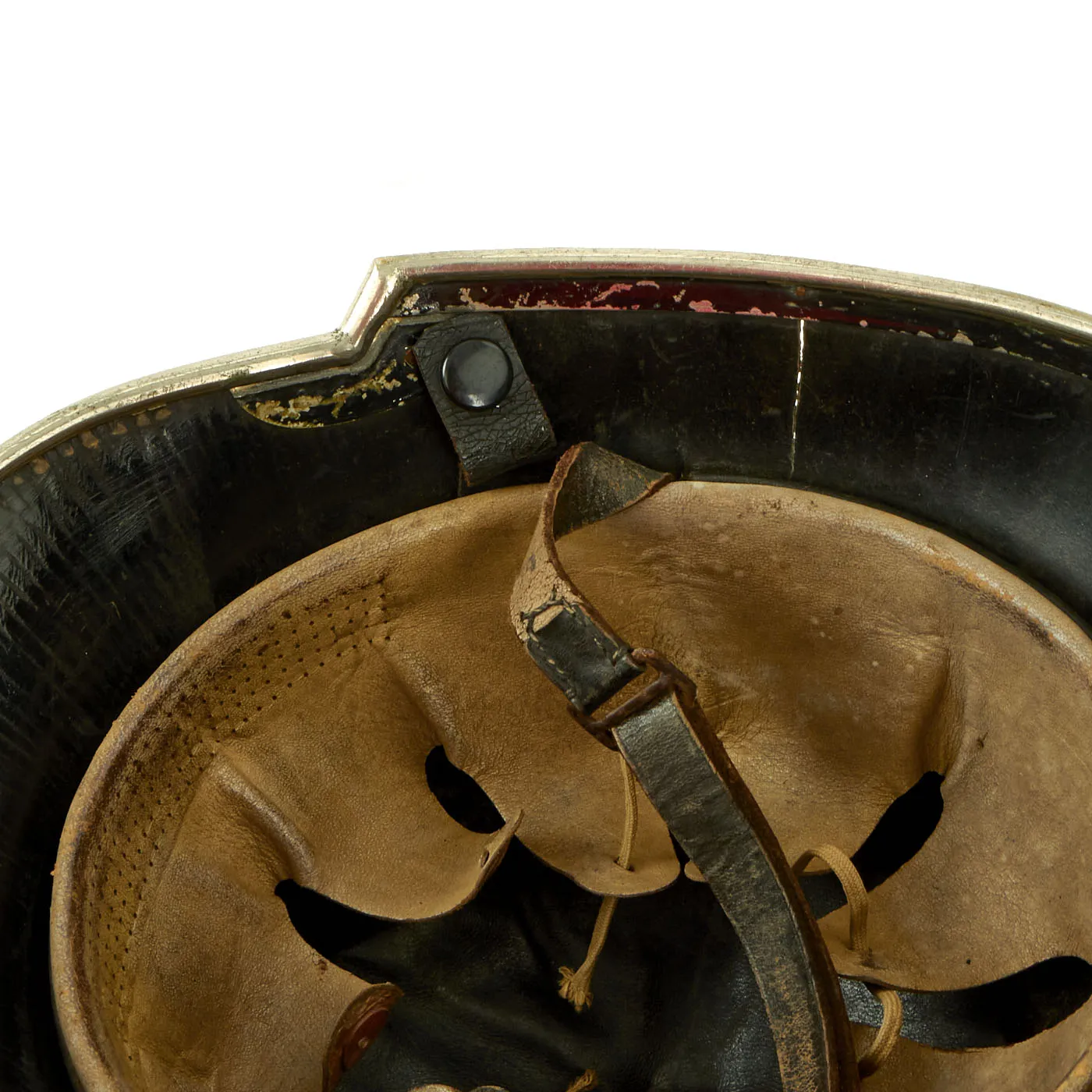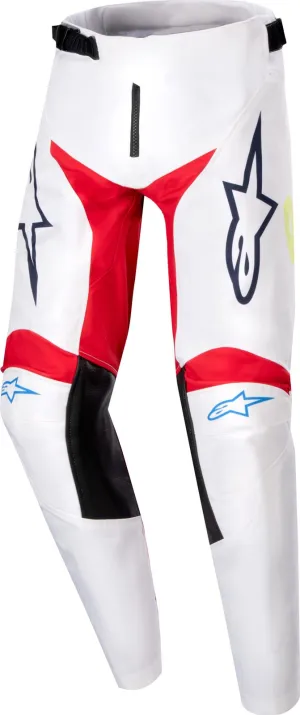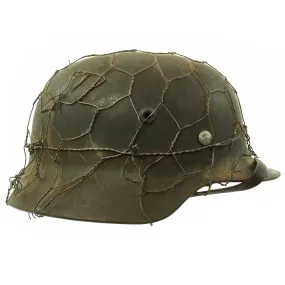Original Item: Only One Available. This is a very interesting early 1930's Experimental German Fire Brigade (Feuerwehr) helmet, made from pressed "Vulkanfibre", as later uses for the visors of German Schirmmütze Visor Caps. Intended to replace the leather style previously used, these were put into service in the early 1930s on a small scale, and found to be wholly inadequate. Not only were they not much lighter than steel helmets, they were far less protective. They were quickly phased out of service and replaced with the M34 "Civic Square Dip" helmet, which were made using a lightweight steel alloy, and ended up being far more satisfactory.
This is a rare example that has survived the decades without being severely damaged or destroyed, and it also definitely looks to be an upmarket version, with a "German Silver" top comb, as well as trim around the entire bottom. We assume this would be for an officer or higher ranker member of the fire brigade. There are no insignia that we can see to indicate where it was put into service.
The interior still retains a complete leather liner, with an intact leather top pad and top securing string. It has the correct 5 rows of vent holes on the front, and is secured in place by 5 rivet pins around the circumference of the helmet. The leather chinstrap is still present and in very good condition, with a functional clip hook, and there are also the two straps with snaps in front for attachment of a leather neck shield. The rear of the shield would attach to the small fitting on the inside rear skirt of the helmet.
The liner has the following embossed silver markings in a diamond over both ears:
GES. GESCH.
FABRIKMARKE
EREL
BERLIN
FIBER - HELM
Erel is a known maker of these helmets and other fiber helmets, as well as top class Visor Caps.
Condition of the helmet is very good, though it definitely shows age. The shell has split in areas, as the Vukanfiber is somewhat brittle, and there is rippling on the interior due to age as well. The black finish on the exterior now is checked and crazed throughout, giving it a fantastic aged look. The top comb, made from soft German Silver, has a lot of denting in the top. Both brass mesh vents are intact, but now display an oxidized patina.
Overall a great opportunity to pick up a rare Experimental Fire helmet from the pre-war period. This are quite hard to find, and this is definitely an upmarket version. Ready to display!
More on the Fire Protection Police:
On June 17TH 1936, Reichsführer-SS Heinrich Himmler was appointed to the newly created position of Chef der Deutschen Polizei im Reichsministerium des Innern (Chief of the German Police in the National Ministry of the Interior), effectively giving him full control of all police agencies within Germany including the Feuerschutzpolizei, (Fire Protection Police). As a result of this appointment and the restructuring of all the separate German state police into a single national police force new regulations were instituted on June 25TH 1936 to bring about uniformity in dress for all police through-out the country. The Police were divided into eight assorted branches of service with each branch being assigned a specific identifying, Truppenfarbe, (branch of service color), with the Feuerschutzpolizei being allocated carmine truppenfarbe. The Feuerschutzpolizei were further distinguished from the other police branches of service with blue uniforms and headgear instead of the typical police green uniforms.
Types of Helmets Used:
Prior to 1929 many fire-fighting units used leather helmets in various styles with most appearing similar to the leather spiked helmet (Pickelhaube) of World War I. These helmets bore a stamped metal crest on the front depicting the province or township to which the fire-fighting unit belonged.
In 1929 a light-weight plastic fiber (Vulkanfiber) helmet was prototyped for general use by all fire-fighting units. The first models were issued in 1932 and proved unworthy of further consideration. As a result a second prototype was explored using light-weight steel alloy known as "Edelstahl." During this time leather fire-fighting helmets were slowly replaced with a combination of surplus World War I model steel helmets and privately manufactured versions in the “Austrian” pattern shell. These early helmets were generally painted black although some were left in their original field-gray World War I color.
In 1934 the light-weight steel alloy prototype helmet was approved for general use by all fire-fighting units. This helmet is designated the “M1934” by modern collectors because of the year of its introduction. Several different versions of the M1934 helmet exist with many variations resulting from subtle differences in the air vents or visors. The M1934 helmet was painted semi-gloss black inside and out with two insignia placed one on each side.
Fire Protection Police helmets were manufactured with and without an aluminum metal comb. In some cases the metal comb was also painted black. As a result of a large surplus, M1934 helmets without combs were issued in 1940 for general wear by all fire-fighting personnel. The helmets used typical civilian style liner systems and chinstraps. The liners were made so that they could accommodate a removable black leather neck shield.




